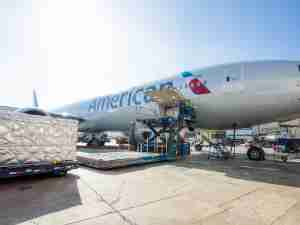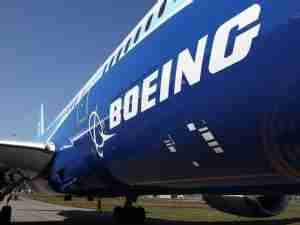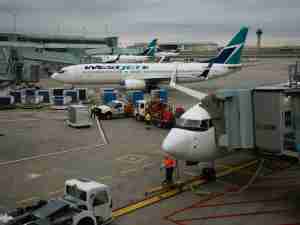Fitch Ratings has affirmed $1.3 billion of outstanding Hawaii Department of Transportation (airports division) airport system revenue bonds at 'A+' and $150.8 million in Certificates of Participation (COPs) at 'A'. The Rating Outlook is Stable.
The airport has $58 million in outstanding COPs not rated by Fitch.
KEY RATING DRIVERS
Summary: The ratings reflect the essentiality of air traffic to the state's island system of airports, which generates a solid base of leisure-focused, origination and destination (O&D) traffic. The ratings also consider the ongoing capital program, resulting in some upward pressure to airline cost and leverage metrics, although the enterprise's overall financial position should remain sound. The rating distinction between the revenue bond liens reflects the subordinated nature of the obligation securing the COPs, and weaker coverage covenants when compared to those of the senior debt.
Monopolistic Position; Leisure Exposure - Revenue Risk (Volume): Stronger
The necessity of air travel to, from and between Hawaii's various islands provides the airport system with a stable origin and destination base of approximately 18.8 million enplaned passengers. The economy is anchored by tourism, but the large military presence somewhat stabilizes the traffic base. While Hawaiian Airlines (BB-/Stable) accounts for approximately half of total system enplanements, the expansion of domestic and international services, as well as necessity of air travel for this market mitigates risk.
Rolling Airline Agreement - Revenue Risk (Price): Stronger
The hybrid airline use and lease agreement, covering roughly 60% of operating costs, does not have an expiration date and automatically extends quarterly. CPE remains competitive at $9.62 in fiscal 2018, lower than previously expected. CPE is projected to rise over the next several years to the $12-$13 range ($14-$15 in the rating case) as capital spending occurs and costs are charged to carriers; however, it is not anticipated to affect traffic demand given Hawaii's continued attractiveness as a tourist destination.
Partially Debt-Funded CIP - Infrastructure Development/Renewal: Midrange
The Airports Division's capital program through fiscal 2023 totals approximately $2.4 billion, with outstanding and future revenue bonds accounting for approximately $1.9 billion of the funding, or 77% ($725 million to be issued in fiscal years 2020-2021, accounting for roughly 30% of the current plan). This amount does not include $948 million total capital costs for the ongoing CONRAC projects at HNL and OGG. The CIP does not reflect projects for which airline concurrence has not yet been reached, or for which project completion falls outside the CIP period. Close oversight from the state government together with prudent management of capital spending and borrowings will be important to rating maintenance.
Conservative Debt Structure - Debt Structure: Stronger (Senior); Midrange (Subordinate)
Revenue bond debt is 100% fixed rate with a declining debt service profile and final maturity in 2048. The rated COPs are also fixed rate with final maturity in 2029, and have an increasing debt service profile that is structured to match the increase in the annual energy savings guarantee from Johnson Controls Inc. (JCI) under the energy performance contract. The rating distinction between the revenue bond liens reflects the subordinated nature of the obligation securing the COPs, and weaker coverage covenants when compared to those of the senior debt. In addition to the current revenue bonds and COPs outstanding, the Airports Division expects to issue approximately $357 million in 2020 and $350 million in 2021 to fund its CIP, though these figures remain preliminary.
Financial Profile
DOTA's leverage position is moderate compared to peers, with net debt-to-cash flow available for debt service (CFADS) at 2.0x in fiscal 2018 for senior debt and 3.4x on an all-in basis. Since fiscal 2014, senior debt service coverage has ranged from 1.6x to 1.9x, with fiscal 2018 at 1.9x (1.6x including COPs). Under Fitch's rating case all-in coverage averages 1.4x, while aggregate airport leverage is anticipated to increase to the 8x range with CIP borrowings, then modestly delever to the 7x range by 2024. Liquidity currently remains strong with 712 days cash on hand (DCOH) in fiscal 2018. Management intends to maintain liquidity at comparable levels going forward, although some cash may be used to offset additional borrowing costs.
Peer Group
Hawaii's peers include Greater Orlando Aviation Authority (rated AA-/A+/Stable) and Las Vegas (rated A+/Stable) given the similar relationship to leisure passenger traffic. Hawaii has the highest carrier concentration of the three, and has the second highest liquidity position as measured by DCOH. Hawaii's aggregate leverage levels are comparable to both Orlando and Las Vegas under the Fitch rating case, with future leverage anticipated at the 6x-7x level in 2024. Additionally, both Hawaii and Orlando will see rising but competitive CPE and leverage as their CIPs progress.
RATING SENSITIVITIES
Developments That May, Individually or Collectively, Lead to Negative Rating Action:
--Sustained all-in leverage above 8x;
--Heightened volatility or sustained negative trends in enplanement levels.
Developments That May, Individually or Collectively, Lead to Positive Rating Action:
--Successful execution of the CIP, coupled with sustained maintenance of all-in leverage below 5x.
CREDIT UPDATE
Performance Update
Total system enplanements and carrier service continue to trend positively for the airport system, with 2018 traffic surpassing pre-recession levels. Enplanements rose to 18.8 million in fiscal 2018, a 5.3% increase relative to the year prior, and building on a five-year CAGR of 2.6%. Overseas enplanement activity increased 9.8% in fiscal 2018, accounting for 60% of total enplanements, reflecting management's expectation of continued growth in overseas enplanement in the coming years. Interisland flights, which account for the remainder, decreased 0.7% in fiscal 2018. Fiscal 2019 enplanements are anticipated to decrease to 18.7 million for the airport system based on estimated actual results.
The Airports Division is benefitting from several service additions that are expected to drive traffic growth in the near to medium term, notably the entrance of Southwest Airlines into the Hawaiian market. Southwest began service to Hawaii destinations including HNL, Kahului, Lihue, and Kona from two California markets: Oakland and San Jose, with Sacramento and San Diego expected in the near term. Despite its recent entry into the Hawaiian market, Southwest has added roughly 120,000 seats per month and has captured a monthly overseas market share of 5.8% as of June 2019.
In addition to Southwest's new service, traffic is also buoyed by ongoing upgrading of aircraft by majority carrier Hawaiian Airlines; and new service from low cost carriers (Air Asia X, Sun Country) as well as traditional carriers (Air Canada adding Toronto service, Hawaiian adding Sacramento and Boston service, among others). Hawaiian, Mokulele, and Southwest Airlines (as of April 2019) serve the interisland passenger market; however, Hawaiian Airlines remains the leader with an estimated 93% market share as of fiscal 2019.
Fiscal 2018 operating revenue grew 8.4% to $431 million, resulting from increased revenue from airport landing fees, aeronautical revenues and concessions revenue. Airline revenues, which represented 51.4% of operating revenues in 2018, increased 7.6% while non-airline revenue increased approximately 9.3%, driven largely by improvements in the concession program and car rentals, attributed mainly to an increase in passenger volume. Fitch views positively the system's ability to generate additional non-aviation revenue, allowing for offsets to increasing airline costs as the CIP progresses. Additionally, the airport's recent PFC application was approved in September 2018, providing the airport $314 million in collection authority to support various projects in its capital plan.
Cost management remains important to maintaining the rating. Operating expenses have been increasing moderately with annual growth of 4.2% from 2013-2018, and utility savings from the Airports Division's energy conservation project should help to offset increasing expenses. Airlines currently support the system's costs under a strong hybrid agreement, covering roughly 60% of operating costs through rates and charges. In fiscal 2018, CPE compared favourably to peers at $9.62, and is forecasted to increase to the $12-$13 range through 2024 ($14-$15 in Fitch's rating case) as the Airports Division progresses with its capital program.
Fitch views the airport's fiscal 2018 financial performance favourably with debt service coverage for senior revenue bonds was 1.9x in fiscal 2018, up from 2017 and roughly 20 bps above the prior five-year historical average, and in excess of Fitch's prior base case expectation of 1.7x. All-in coverage including COPs totaled 1.6x. Leverage was 2.0x senior and 3.4x all-in, reflecting incorporation of principal from the 2015 borrowing. Leverage is anticipated to elevate in fiscal 2019 onward, reflecting the recent issuance of the Series 2018 bonds and the planned issuances in fiscal years 2020-2021.
The CIP through fiscal 2024 totals $2.4 billion; management has indicated that approximately $1 billion (42%) has been expended and that over 50% of projects are in construction or closeout phases. A few notable projects in the airport's CIP include Mauka Concourse at HNL, and various terminal improvements at KOA, OGG and HNL. The airport's CIP does not include the CONRAC program at OGG and HNL, which is estimated at $948 million as well or excluded projects for which airline concurrence has not yet been reached, or for which project completion falls outside the CIP period. The airport anticipates using future debt issuances as a key funding source; however, it will also use a combination of grants, PFCs, and cash in funding its CIP.
Fitch Cases
Fitch viewed management's forecast as reasonable, and adopted it as the base case. Enplanements decrease 0.7% in 2019 based on estimated actual performance, followed by growth at a 1.3% CAGR through 2024; total revenue increases 4.9% through 2024, reflecting additional increases in rates and charges as continued portions of the CIP come online, as well as uplift from new services including Southwest, and an increase in concessions due to new agreements. Expenses increase at a 5.0% CAGR through 2024. Additional issuances in 2020 and 2021 totalling roughly $725 million are included. Senior coverage averages 1.8x through 2024 on an indenture basis, and 1.5x including COPs. CPE rises to the $12-$13 range through 2024. Senior leverage rises to 6x in 2022 (approximately 7x all-in) due to CIP debt coming online; however, leverage rapidly declines to the 5x level by fiscal year-end 2024.
Fitch's rating case assumes an 8.0% stress to enplanements in 2020, followed by a year of zero growth then moderate recovery of 2.5% through 2024. Expenses rise at an annual growth rate of 5.4%. Senior coverage averages 1.7x with all-in at 1.4x, and airline costs are assumed to increase at a greater rate than the base case to account for lower activity levels and higher costs. Under this scenario, CPE rises to the $14-$15 range. Total leverage increases to approximately 8.2x in 2022, before falling to the 7x range by 2024 as airline revenues increase to offset additional debt requirements.









